
Bible Chronology Based on the Septuagint
Many Western religions base their chronology on 9th century AD Hebrew texts, but we’ve found a better and older chronology in the Greek Septuagint.
We believe that this chronology is more accurate. It’s also longer!
- The Great Downpour (the flood of Noah) occurred around 5,400 years ago (not 4,300 years ago)
- Adam was created roughly 7,500 years ago (not 6,000 years ago)
Our date for Adam’s creation (between 5614 and 5479 BC) are in the same ballpark as the ancient Byzantine calendar, which places it in 5509 BC. This similarity suggests there’s something to these ancient records — after all, they had access to documents that are now lost to history.
Let’s journey backward through time, starting from a fixed point we can verify historically!
Note
These dates are all approximate, and they depend on a few assumptions, which we explain on this timeline, below.
Timeline
~1525 BC
The Israelites’ Departure from Egypt
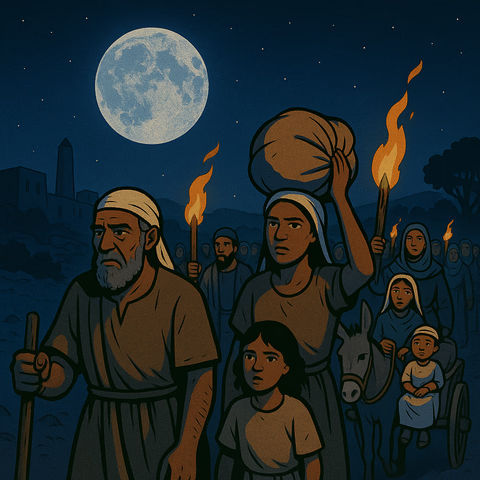
The death of Egyptian Pharaoh Ahmose marks our starting point, as this is the year we calculated for the Departure from Egypt (the Exodus).
To learn why we have settled on this date, read about why we believe the Pharaoh was Ahmose.
The year AD 2000 was about 3,524 years after this event.
-400 years: ~1925 BC
Israelites Enter Egypt
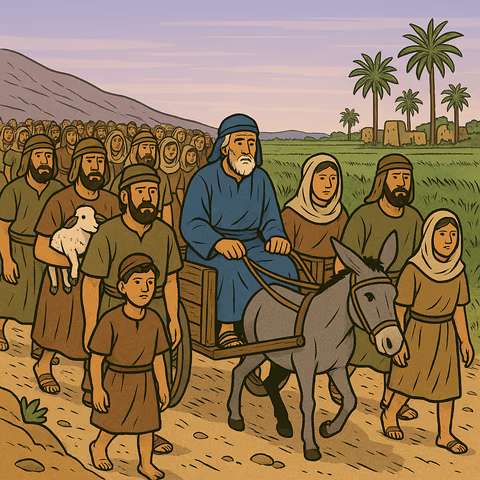
Although there are arguments otherwise, we strongly believe that the Israelites spent 400 years in Egypt (Genesis 15:13), so we reach the time when Jacob’s family first entered the land.
-30 years: ~1955 BC
Jacob Returns to Canaan
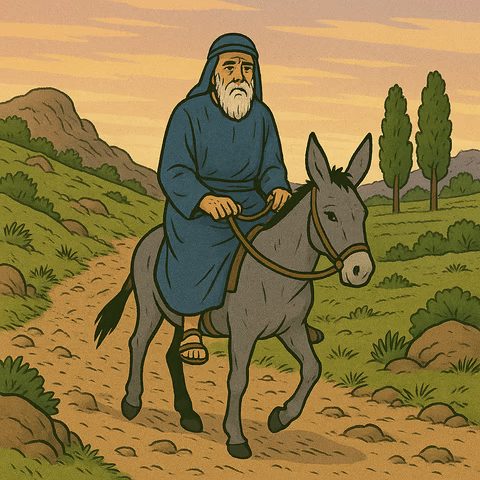
Jacob spends 30 years in the Promised Land between his return from Harran and moving to Egypt.
He is 100 years old at this point.
-100 years to ~2055 BC
Birth of Jacob

Jacob is, therefore, born 100 years earlier in 2055 BC.
His father, Isaac, was 60 years old when he was born (Genesis 25:26).
-60 years to ~2115 BC
Birth of Isaac

Counting back 60 years, Isaac is born in ~2115 BC.
His father, Abraham, is 100 years old when he was born (Genesis 21:5).
-100 years to ~2215 BC
Birth of Abram
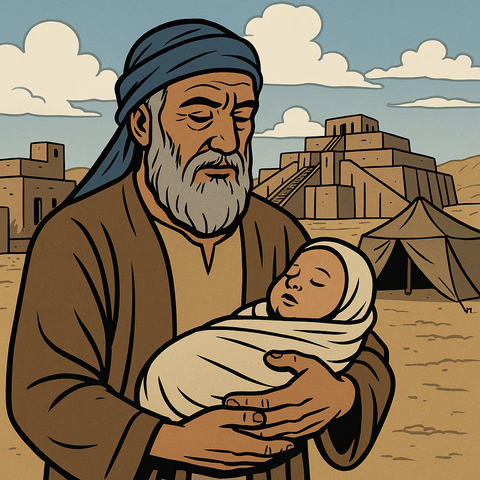
Counting back 100 years, Abram (later renamed AbraHam) is born.
How old was his father, Terah, when Abram was born? Genesis does not tell us. It only says in Genesis 11:26 that Terah was 70 years old when he started having children, one of whom was Abram.
To work out how old Terah was when Abram was born, we need to consult what Stephen said in Acts 7, where he states that AbraHam was 75 years old when he moved to the Promised Land ‘after the death of his father.’ with nothing else to go on, we assume that it was immediately after Terah’s death — but this is just a guess.
Genesis 11:32 reveals that Terah was 205 years old when he died, so 205 - 75, means Terah was, at the very least, 130 years old when Abram was born, but he could have easily been older if Abram had waited around after his father’s death before moving to the Promised Land.
This is quite a big unknown in the chronology, but we’ll just have to make the best of it and assume that we have a period of at least 130 years. It could be more.
-130 years to ~2345 BC
Birth of Terah

Counting back 130 years, to Terah’s birth, we come to ~2345 BC.
His father, NaHor, is 79 years old when he was born (Genesis 11:24).
-79 years to ~2424 BC
Birth of NaHor
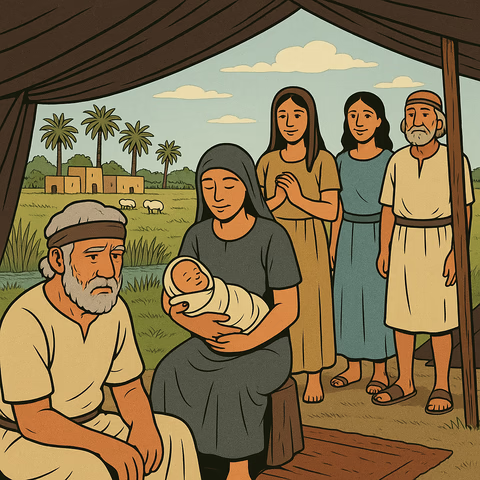
Counting back 79 years, to NaHor’s birth, we come to ~2424 BC.
His father, Seruch, is 130 years old when he was born (Genesis 11:22).
-130 years: ~2554 BC
Birth of Seruch
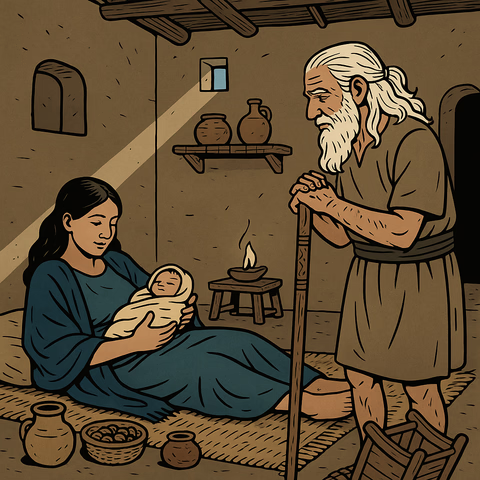
Counting back 130 years, to Seruch’s birth, we come to 2554 BC.
His father, Ragau, is 132 years old when he was born (Genesis 11:20).
-132 years: 2686 BC
Birth of Ragau
Counting back 132 years, to Ragau’s birth, we come to 2686 BC.
His father, Phaleg, is 130 years old when he was born (Genesis 11:18).
-130 years: 2816 BC
Birth of Phaleg
Counting back 134 years, to Phaleg’s birth, we come to 2820 BC.
His father, Heber, is 134 years old when he was born (Genesis 11:16).
-134 years: 2950 BC
Birth of Heber
Counting back 130 years, to Heber’s birth, we come to 2950 BC.
His father, Sala, is 130 years old when he was born (Genesis 11:14).
-130 years: 3080 BC
Birth of Sala
Counting back 130 years, to Sala’s birth, we come to 3080 BC.
His father, Kainan, is 135 years old when he was born (Genesis 11:13, LXX only).
You’ll see there’s some issue with his father’s existence, with other manuscripts saying his father was Arphaxad.
-135 years: 3215 BC
Birth of Kainan

Not to be confused with three similarly-named men: It’s not Adam’s son Cain, nor Noah’s grandson CanaAn, neither of whom are part of this chronology. Nor is he to be confused with Adam’s great-grandson Cainen who appears in this chronology further down.
Counting back 135 years, to Kainan’s birth, we come to 3215 BC.
His father, Arphaxad, was 135 years old when he fathered Kainan (Genesis 11:12, LXX only).
Now, we have a bit of a mystery!
Did this guy actually exist?
You see, this Kainan only appears in two places: the Greek Septuagint text and the chronology in Luke at Luke 3:36. The Hebrew text does not mention him at all! Instead, it skips him entirely and has Arphaxad fathering Sala (Shelah). The ancient Jewish historian Josephus also fails to mention him.
Why is this?
Some speculate that Kainan is nothing more than a scribal error (where they accidentally repeated the entry for Cainen, Adam’s great-grandson). This could be true, but there are also some folk tales about this character. In the Book of Jubilees, he supposedly learns about the art of astrology by reading pre-flood rock carvings. So it may simply be that the Pharisees didn’t want to include him in the Torah for this astrological link, and erased him from the Hebrew text.
We really don’t know. And as for his entry in Luke 3:36, some copies don’t include him, so perhaps someone added him there at a later date.
For the sake of this chronology, we’ll include him just so we can say this is a faithful Septuagint-based chronology, but we’ll provide dates excluding him too.
To help simplify things, we call this man Kainan and Seth’s son Cainen.
-135 years: ~3350 BC
Birth of Arphaxad
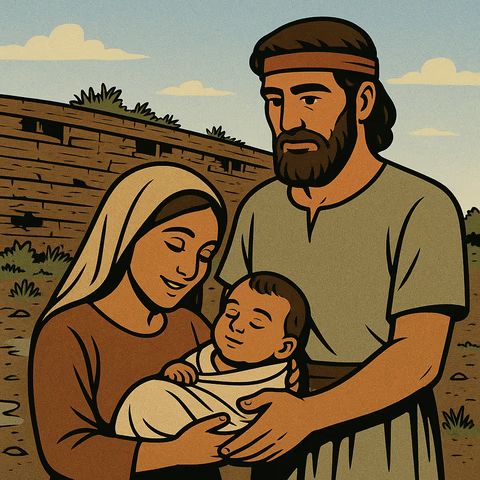
Counting back 135 years, to Arphaxad’s birth, we come to ~3350 BC (~3215 BC without Kainan).
Now, Genesis 11:10 says that Arphaxad was born 2 years after the Great Downpour, when his dad (Shem) was exacly 100 years old.
-2 years: ~3352 BC
The Great Downpour

Counting back 2 years, we come to ~3352 BC (~3217 BC without Kainan), the year of The Great Downpour. (Genesis 6:6-8:21)
The year AD 2000 was at least 5,351 years after the Great Flood, (or 5,216 years ago if we exclude Kainan) — or further back if Terah was older than 130 when he fathered Abram (Abraham).
-100 years from Arphaxad: ~3450 BC
Birth of Shem
Counting back 100 years from Arphaxad’s birth, to Shem’s birth, we come to ~3450 BC (~3315 BC without Kainan).
Now, how old was his father, Noah, when he was born? Just like with Terah and Abraham, Genesis 5:32, only tells us that Noah was 500 years old when he began having children, and even though Shem was listed first, it seems that the text lists the sons by importance (their line to the Messiah), not by age. We have to work out how old Noah was when Shem was born.
It tells us that Shem was exactly 100 years old when he had his son Arphaxah, 2 years after the flood, and Noah was 601 years old when the flood ended. Therefore, Noah was probably about 502 years old when Shem was born.
-502 years: ~3952 BC
Birth of Noah

Counting back 502 years, to Noah’s birth, we come to ~3952 BC (~3817 BC without Kainan).
His father, Lamech, is 188 years old when he was born (Genesis 5:28-29).
-188 years: ~4140 BC
Birth of Lamech
Counting back 188 years, to Lamech’s birth, we come to ~4140 BC (~4005 BC without Kainan).
His father, Methuselah, is 187 years old when he was born (Genesis 5:25).
-187 years: ~4327 BC
Birth of Methuselah
Counting back 187 years, to Methuselah’s birth, we come to ~4327 BC (~4192 BC without Kainan).
His father, Enoch, is 165 years old when he was born (Genesis 5:21).
-165 years: ~4492 BC
Birth of Enoch
Counting back 165 years, to Enoch’s birth, we come to ~4492 BC (~4357 BC without Kainan).
His father, Jared, is 162 years old when he was born (Genesis 5:18).
-162 years: ~4654 BC
Birth of Jared
Counting back 162 years, to Jared’s birth, we come to ~4654 BC (~4519 BC without Kainan).
His father, MaleLeal, is 165 years old when he was born (Genesis 5:15).
-165 years: ~4819 BC
Birth of MaleLeal
Counting back 165 years, to MaleLeal’s birth, we come to ~4819 BC (~4684 BC without Kainan).
His father, the earlier Cainen, is 170 years old when he was born (Genesis 5:12).
-170 years: ~4989 BC
Birth of Cainen
Counting back 170 years, to Cainen’s birth, we come to ~4989 BC (~4854 BC without Kainan).
His father, Enos, is 190 years old when he was born (Genesis 5:9).
-190 years: ~5179 BC
Birth of Enos
Counting back 190 years, to Enos’ birth, we come to ~5179 BC (~5044 BC without Kainan).
His father, Seth, is 205 years old when he was born (Genesis 5:6).
-205 years: ~5384 BC
Birth of Seth
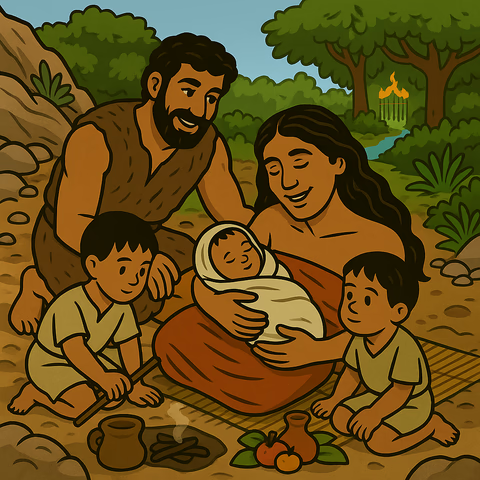
Counting back 205 years, to Seth’s birth, we come to ~5384 BC (~5249 BC without Kainan).
His father, Adam, is 230 years old when he was born (Genesis 5:3).
-230 years: ~5614 BC
Creation of Adam

Counting back 230 years, to Adam’s creation, we come to ~5614 BC (~5479 BC without Kainan).
The year AD 2000 was at least 7,613 years after the creation of Adam (or 7,478 years ago if we exclude Kainan) — or further back if Terah was older than 130 when he fathered Abram (Abraham).
- Jesus was born around 5,500-5600 years after Adam’s creation.
- 6,000 years of human history ended sometime in the 4th or 5th centuries AD.
- 7,000 years of human history ended sometime in the 14th or 15th centuries AD.
If the Septuagint’s chronology is correct, we are currently in the 8th millennium of human history.
Biblical Chronology
 Bible Chronology Based on the Septuagint
Bible Chronology Based on the Septuagint Who Was Pharaoh in Exodus?
Who Was Pharaoh in Exodus? How Long Were the Israelites in Egypt?
How Long Were the Israelites in Egypt?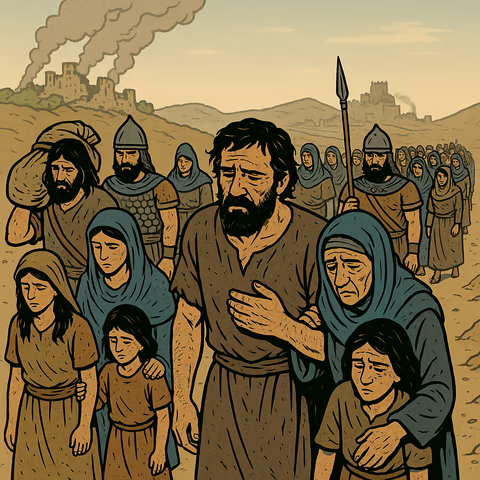 How Long Was the Babylonian Exile?
How Long Was the Babylonian Exile? When Bible Chronology Goes Wrong
When Bible Chronology Goes Wrong
Also see our Articles index and our About section.